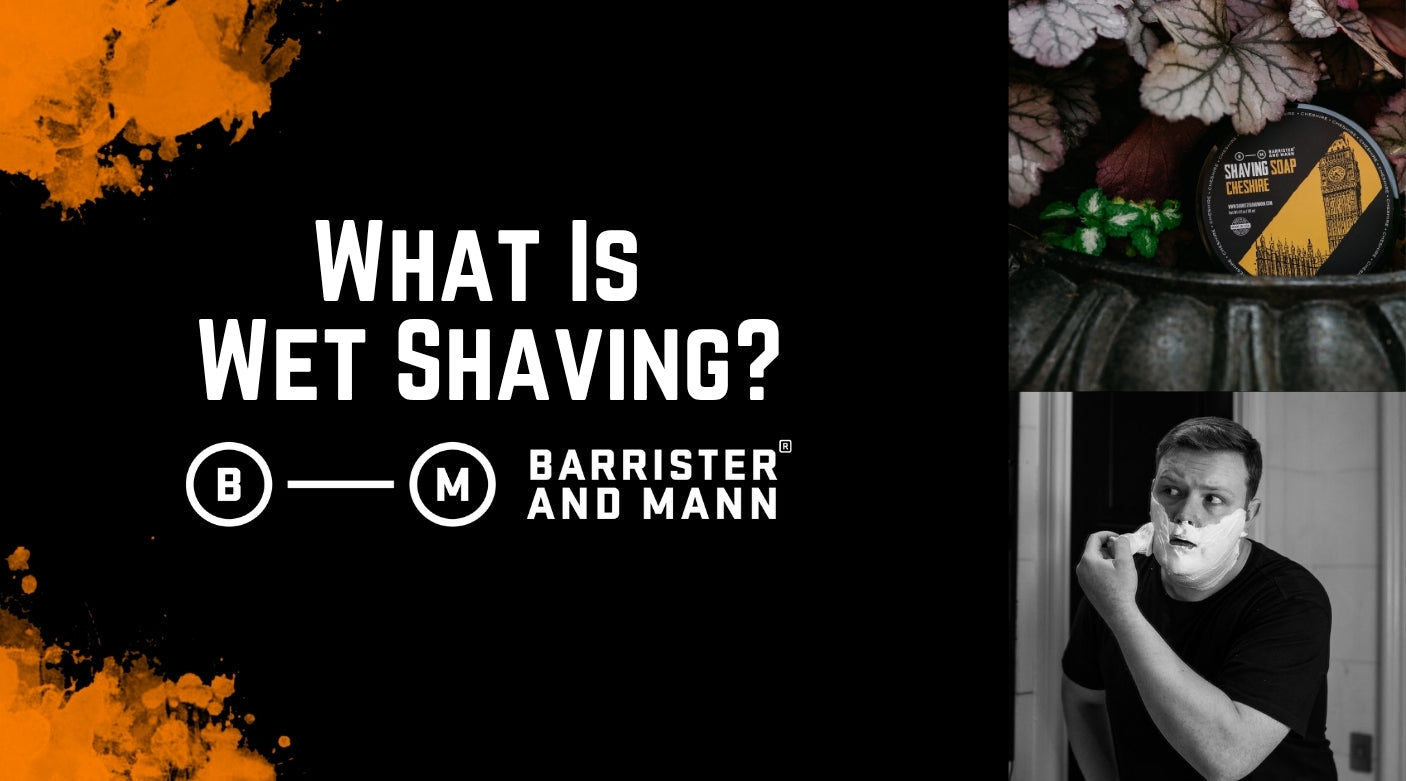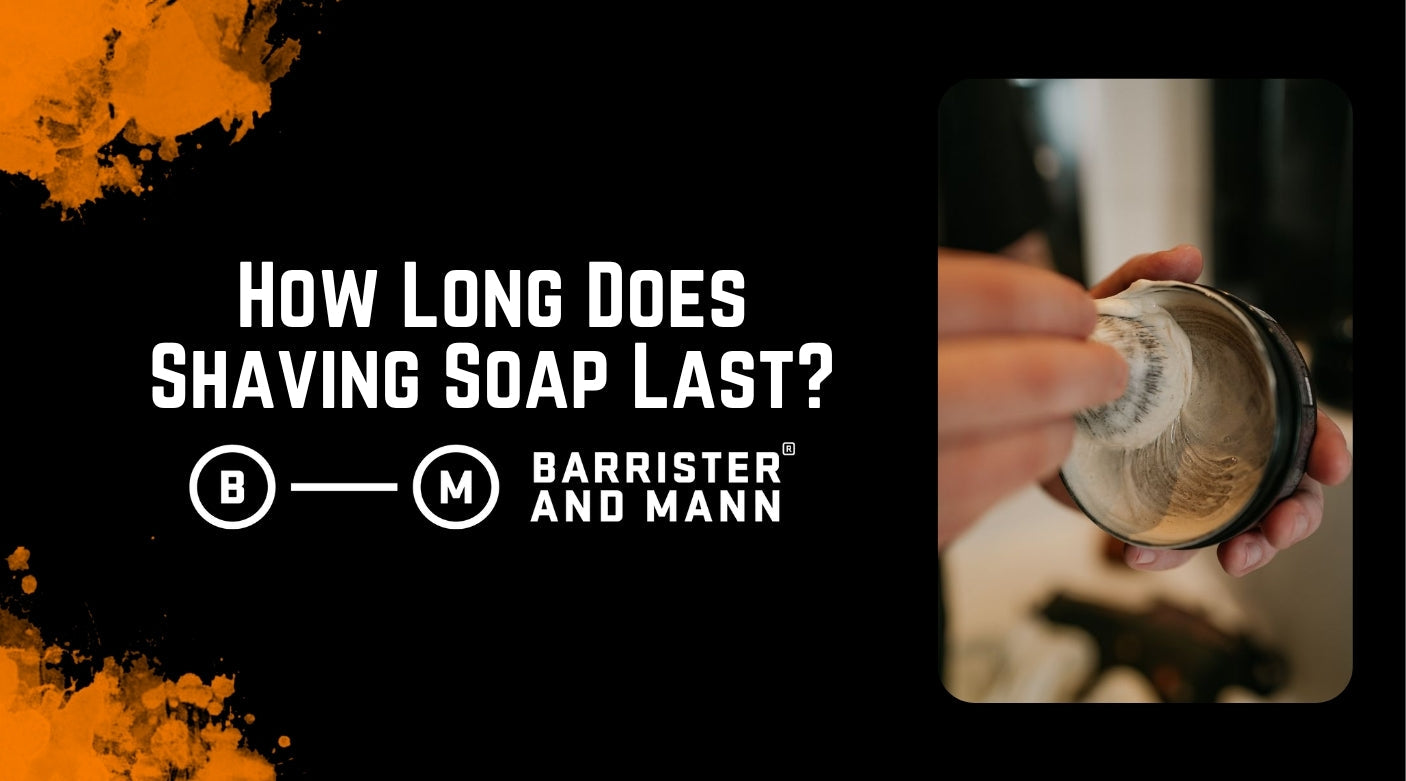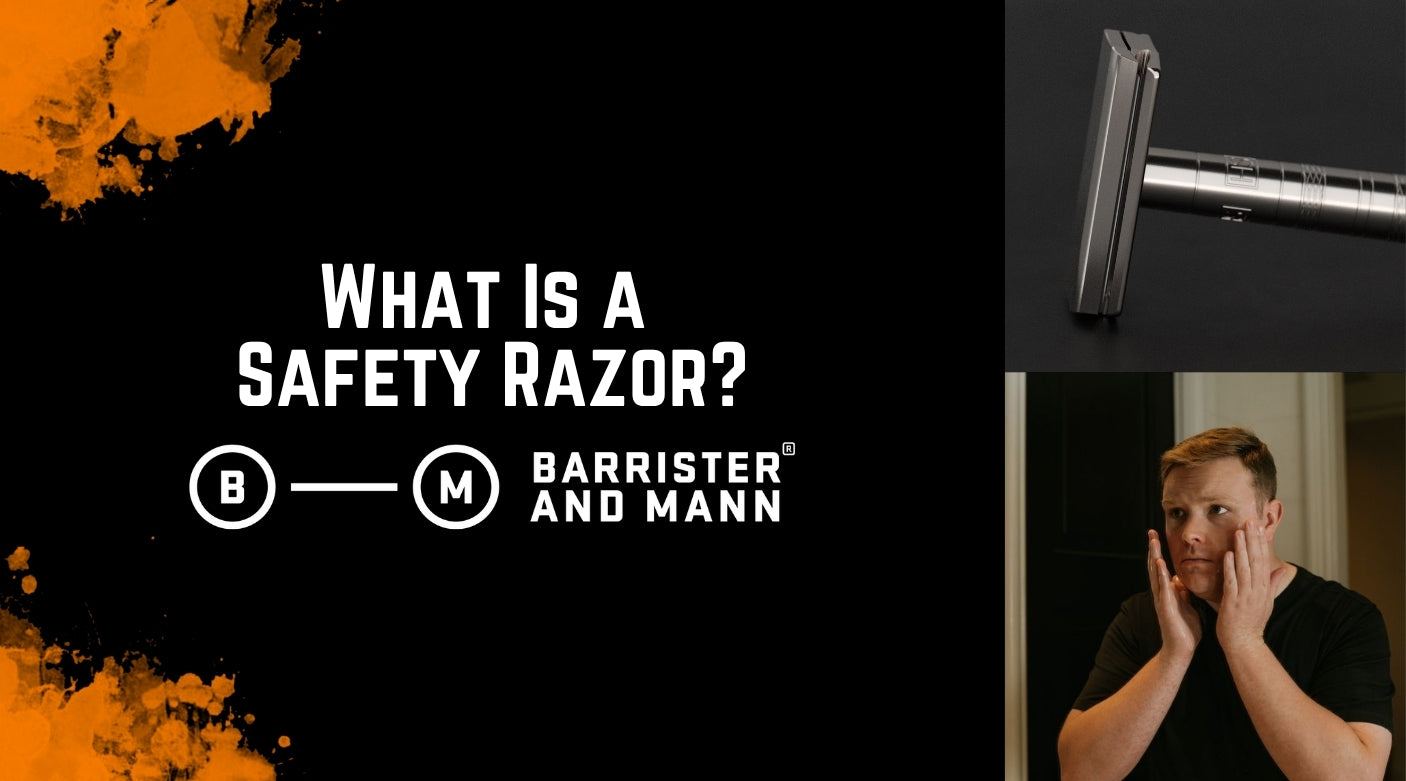Wet shaving uses water and lather to soften hair and protect the skin during a shave. It includes everything from safety razors to cartridge razors. Dry shaving skips the water entirely and relies on electric tools. The difference is in the prep, the ritual, and the results.
-
Wet shaving uses water and lather: Softens hair, cushions the skin, and reduces friction.
-
It’s not about the razor: Cartridge, safety, or straight—all count if lather is involved.
-
Dry shaving skips the essentials: No water, no lather. Just an electric razor on bare skin.
-
Traditional shaving is wet shaving: Brush, soap, single blade—classic wet shaving tools. That said, not all forms of wet shaving can be counted as traditional shaving.
-
Wet shaving works better: Less irritation, fewer bumps, smoother results.
-
The tools are simple: Water, a razor, soap or cream, and a way to build lather.
Want to know what separates a passable shave from a perfect one? Keep going.
What Is Wet Shaving?

Wet shaving is exactly what it sounds like. You shave using water, a proper lather, and a blade. That’s the core of it. It softens the hair, cushions the skin, and lets the blade glide cleanly instead of dragging and skipping.
It does not matter whether you’re using a safety razor, a straight razor, or a disposable cartridge. If there’s water and lather involved, it’s wet shaving. The idea that it only counts if you’re using a vintage Gillette and a badger brush is simply not true. This is about preparation, not purity tests.
Most people think of canned foam and a quick swipe with a cartridge razor as normal. And yes, technically, that is wet shaving. There’s water. There’s lather. But it’s the low-effort version. Real wet shaving takes that same foundation and does it properly. You build a protective lather and take the time to shave with intention. The results speak for themselves.
The Tools Evolve. The Ritual Stays the Same.
The core hasn’t changed much in centuries. The ancient Egyptians shaved using water and special oils, as well as producing early soaps made from animal fat. To shave, they used copper and bronze razors. Grooming was tied to ritual, identity, and social status. It meant something. That same mindset still runs through traditional wet shaving today.
What has changed are the tools. A sharp safety razor. A well-made soap. A brush that builds lather and lifts the hair. These let you shave with more control and fewer passes. And they make the whole thing feel good, not just look finished.
Wet Shaving vs. Dry Shaving: What’s the Difference?

Wet shaving is about using water and lather to prep the skin before you shave. That is the defining line. You could be holding a straight razor or a five-blade cartridge. It does not matter. If there is water and lather involved, you are technically wet shaving.
Dry shaving, on the other hand, skips all of that. There is no prep. No hydration. Just a blade, usually electric, on bare skin. It is fast and often done on the go, but the tradeoff is comfort. Skin gets irritated. Stubble is left behind. It might get the job done, but I’m yet to encounter anyone who dry shaves and actually enjoys it.
Key distinction to maintain:
-
Wet shaving: shaving with water and lather, regardless of the razor type (cartridge, disposable, safety, straight).
-
Dry shaving: shaving without water or lather, typically using electric razors.
The Middle Ground
Disposable razors can go either way. Some are built for dry use, with lubricating strips to help them glide across the skin without water. That does not mean you should use them that way. Just because a razor can dry shave does not mean your skin should suffer for it.
Even cartridge razors paired with canned foam land in a gray area. Yes, there is water. Yes, there is lather. But that foam is a shortcut. It sits on the skin without softening anything. It dries out quickly and offers little protection. The result is often irritation, razor burn, and that familiar tight feeling no one actually wants.
The Optimal Way to Wet Shave
A proper wet shave begins with warm water to soften the hair and open up the skin. That step matters more than most people realize. It is what turns a blade from a scraping tool into a precision instrument. After that, you build a real lather. Not foam from a can. Actual lather. The kind that holds moisture against the skin, lifts the hair, and creates a cushion for the blade to glide through.
When everything is prepped properly, the razor does not drag or skip. It moves cleanly. Each stroke removes hair without damaging the skin underneath. The result is less irritation, fewer bumps, and a closer finish. And your skin feels like skin again.
Is Wet Shaving the Same as Traditional Shaving?
Traditional shaving is a form of wet shaving. It is what most people picture when they hear the term. A safety razor. A brush. A puck of soap in a ceramic bowl. Maybe even a straight razor if someone is feeling brave or nostalgic. It is wet shaving, but with classic tools and a specific kind of ritual.
A Brief History of the Safety Razor
The idea of adding a guard to a razor is older than most people think. As early as 1762, a French cutler named Jean Jacques Perret designed a protective device for straight razors. It wasn’t foolproof, but it was a step toward safer shaving.
The first real use of the term “safety razor” appeared in an 1880 patent. That design featured a handle and a removable blade, something much closer to what we know today. Still, early versions required maintenance. You had to strop the blade before each use and eventually send it off to be honed.
That changed in the early 1900s when King Camp Gillette introduced the double-edge safety razor with disposable blades. No stropping. No honing. Just use the blade and swap it out when it dulls. It was simple. Clean. Repeatable.
The U.S. military adopted it during World War I and the safety razor exploded in popularity after that. An interesting anecdote for the history buffs out there—before the war, shaving was not universally required, and facial hair was common among soldiers. But the weaponization and deployment of chlorine gas, and later mustard gas, changed everything. A proper gas mask seal meant no beards. Clean-shaven meant protected. Even though masks were only partially effective against mustard gas, the difference was significant.
It is impossible to know how many lives being clean shaven saved, but the impact was lasting. The clean-shaven rule is still in place today – even with advancements in gas mask technology and other chemical warfare protection.
Gillette’s design set the standard. It turned daily shaving from a skill into a habit. And while the market has evolved, the double-edge safety razor remains the benchmark for quality and control.
Not all wet shaving is traditional
As previously mentioned, a cartridge razor used in the shower with canned foam still counts as wet shaving. There is water. There is lather. That makes it wet shaving by definition. It just is not traditional. It is the modern, streamlined version. Quick and accessible, but far from optimal.
Because we do not consider disposable multiblade razors or aerosol creams to be meaningful parts of a proper wet shave, they will not be part of this discussion moving forward.
Why Wet Shaving Offers a Better Shave
Wet shaving works because it respects the skin. The process is built around softening the hair, protecting the surface, and using the blade with precision. A single blade cuts cleanly at skin level. It does not yank or tug. It does not drag five times across the same area. One or two strokes with a clean result.
Proper technique makes the difference. You do not need pressure. You do not need speed. You need water, lather, and control.
Fewer Ingrowns, Less Razor Burn, and No More Tightness
A single, sharp blade is easier on the skin than five stacked ones. Wet shaving reduces drag and irritation. You get fewer ingrown hairs, less razor burn, and none of that tight, raw feeling after you're done.
Cost Savings Over Time
A quality razor is a one-time investment. You replace the blade, not the entire head. That means no more overpriced cartridges and no subscription traps. It is a better shave for less money.
Environmental Impact
Safety razors are built to last. The blades are recyclable. The soaps last for months and use far less packaging than aerosol cans. There are no batteries to throw out. No plastic-shielded multiblade heads that dull after a few shaves and end up in a landfill.
Wet shaving respects the materials and the process. It does the job without creating a trail of waste behind it.
Sensory Pleasure
The warmth of the water. The scent of a good soap. The rhythm of the brush. It is functional, yes, but it is also grounding. Some might compare it to a meditative moment before getting started with a busy day. A brief pause. A bit of quiet. And then the rest of life can begin.
The Basic Tools You Need to Start Wet Shaving
You do not need a shelf full of polished chrome and rare brushes to get started. You just need the right few tools. Wet shaving is about process, not prestige. A handful of well-made items will carry you far on your wet shaving journey.
A Razor
This is where to start. A safety razor is simple, effective, and far more forgiving than most people expect. It gives you the precision of a single blade without the risk of slicing your skin open. Easy to clean. Easy to master. And built to last. We recommend it without hesitation.
Some purists might prefer a straight razor. It is more involved. It demands more time, more focus, and more maintenance.
Shaving Soap or Cream
A proper soap or cream creates slick, dense lather that hydrates the skin and cushions the blade.
We make shaving soap, not cream. Why? Because we think shaving soap is simply better in every way. It builds a stronger lather. The scent stays with you longer. And a well-made artisan soap will not leave your skin dry or itchy when you rinse it off.
If you prefer cream, that is fine. Just please, do not reach for the aerosol-canned goop. It dries the skin, offers almost no protection, and turns a good shave into damage control.
Shaving Brush
The brush builds the lather and lifts the hair. That is its entire job. Synthetic brushes are soft, fast drying, and easy to maintain. Natural ones, usually boar or badger, hold more water and feel different on the skin. It comes down to preference. Personally, I find synthetic does the job perfectly, and it’s what I use 99% of the time.
If you are using soap, a brush is non-negotiable. It is the only way to work the lather properly. Some creams will also need a brush, while brushless ones—as the name implies—can be applied by hand.
Ready to Start Wet Shaving? Here’s Your Game Plan
Wet shaving is not complicated, but it does reward a little care. You do not need a drawer full of gear or a diploma in grooming. Just the right tools, a basic understanding of technique, and the willingness to take five minutes for yourself. Here is how to get started the right way.
Gather Your Tools
Look for a mild safety razor. Something solid and easy to control. You do not need aggressive blade exposure or gimmicks. Just something that gets out of the way and lets you focus on the shave. Pair it with a reliable soap. Something that lathers well, cushions properly, and smells exactly how you want to smell.
Your 30-second starter guide
Fill the sink with warm water. Wet the area you plan to shave. Load your brush with soap until it looks like a luxurious Greek yogurt, not a cappuccino.
Apply in slow circles. Let it sit for a moment. Then shave with short, light strokes. Rinse. Re-lather. Repeat if needed. Finish with cold water and something soothing. That is the blueprint.
Key Habits That Make the Difference
-
Use warm water to prep: It softens the hair and opens the skin.
-
Never apply pressure: Let the weight of the razor do the work.
-
Shave with the grain first, then across: Follow the natural direction of hair growth.
-
Only go against the grain if your skin can handle it: Skip it if you are prone to irritation.
-
Keep your strokes short: It gives you better control and reduces the chance of cuts.
-
Rinse often: A clean blade works better than a clogged one.
-
Do not rush: This is five minutes for your skin, not a race to beat the clock.
A Better Way to Shave Awaits
Still using electric or five blades and canned goop? Try a real shave. You will never go back.
Wet shaving is not just a grooming method. It is a rebellion against mediocre mornings, irritated skin, and wasteful habits.Elegant. Effective. Soothing in ways you do not expect.
If you want to experience a real wet shave, we invite you to explore our artisan soap offerings. Every scent is developed in house using ingredients that will not leave your skin irritated, dry, or tight. Just smooth lather, rich fragrance, and a shave worth looking forward to.
-
Seville – Our best-selling shaving soap, affectionately dubbed “God’s barbershop,” delivers elite performance and a scent you’ll actually look forward to.
-
Waves – Another of our best-sellers, Waves is crisp, clean, and endlessly wearable. A fresh blend of sea notes, lavender, geranium, and bergamot, it feels like salt air on warm skin and pairs effortlessly with whatever the day throws at you.
-
Unscented – For those with sensitivities, skin concerns, fragrance issues, or who simply prefer their soap unscented, we have you covered.
-
Soap Samples – Too many great scents to choose just one? Grab a few sample bars to find your own personal favourite.


